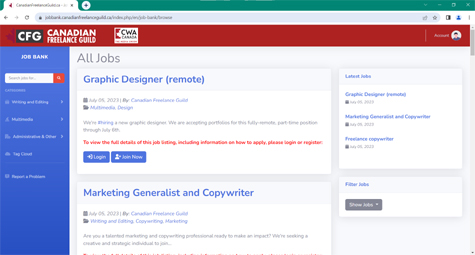by Robyn Roste
 When I began freelancing things were straightforward. Someone would ask me for an article and I would write it. I’d write whenever I felt like it and I’d invoice when I remembered.
When I began freelancing things were straightforward. Someone would ask me for an article and I would write it. I’d write whenever I felt like it and I’d invoice when I remembered.
It sort of worked.
But when I decided I wanted to make a real go of freelancing, I realized I needed a more professional approach. The first step was getting organized.
For me, the benefits of being and staying organized have been remarkable. I am less stressed out, I get my work in on deadline, I’m in sync with my clients and I am able to do my best work.
It took a while to develop the systems and habits I needed to build the business I wanted, one I was proud of and felt good about, but it was worth the effort.
Here are six areas I’ve found key to being organized as a freelancer.
Look at how you use your time
If you’re in a constant state of panic, racing from one deadline to the next and feeling like you’re failing at everything, consider conducting a time audit. You don’t need to get into the minutiae (unless you want to), but do take an honest look at how your days are spent.
Use a typical week and break it into categories like focused work, volunteering, social, family, etcetera. What story does this tell? Where are things imbalanced? Which area is not getting enough attention? What adjustments can you make so you use your time in a more efficient way? Which commitments or hobbies do you need to let go of in order to make space for your freelance work?
This process can be quite illuminating if you’re willing to face the truth.
Plan your days ahead of time
As a new freelancer I had no idea what I was doing. I’d jam the work into gaps of spare time as it came up and getting assignments in on deadline was always a bit of gamble. As my freelance business grew, it became obvious I needed to prioritize my clients and plan when I would work on projects.
For me, this meant a lifestyle shift and I moved all of my freelance tasks into the early morning. I created a theme for each day and planned which projects and what type of work I’d do ahead of time. The themes made sure I didn’t leave out important but not urgent tasks (like marketing) and planning out which projects I’d work on ensured I stayed on task and didn’t jump around too much.
Schedule blocks of focused time
I’ve found I work best within time constraints so I organize my tasks around blocks of focused time. Whether it’s the popular Pomodoro Technique or another time-blocking system, the big idea is this is time spent on one project or task and everything else is set aside.
For example, if I’m working on editing a podcast episode, my phone is in the drawer and on silent, my email is off and my office door is shut. For these time blocks it’s also a good idea to set a timer and stick to the schedule, even if you feel like you’re on a roll when the buzzer sounds. Over time this helps your brain learn how to work within these constraints and you’ll find yourself more productive and able to complete projects within the allotted time.
Calendar everything
This is an easy tip to take to an extreme level so I’ll outline how I calendar my tasks. First, I schedule the deadline. Then I work backwards and add milestones for each project. The number of milestones depends on how much I have on the go and how long individual projects take. By breaking my tasks into smaller pieces it ensures I don’t start on something the day before deadline and I leave enough time to work on it so I don’t stress myself out.
Having everything in my calendar also protects me from last-minute lunch outings and other distractions. Of course, the freelance life does need some flexibility so I leave margin in my schedule for those juicy leads and emergency meetings. What works best for me is leaving two lunch hours per week open for these situations. When I don’t need them I have some free time. And when I do, I’m grateful that I can accommodate it without getting thrown off schedule.
Improve your work space and administrative systems
Do you have a dedicated work space? Even if it’s a basic setup at your kitchen table, having a place where you do all the things helps you focus because your brain switches into work mode quicker. Another important step in staying organized is keeping your files in order.
Administration can be tedious, especially when the paperwork piles up or you’re in a busy season and default to saving work on your desktop or in some random Dropbox folder. While you can get by for a while with a no-system system, you’ll bring your business to the next level if you can create an intuitive organizational structure. Here are three tips for improving administration.
- Figure out a filing system and stick to it (physical and digital)
- De-clutter your work space (the minimalists are on to something)
- Systemize your finances (this includes invoicing)
Implement business systems
Many creative freelancers resist the idea of running a structured business because they want to have a flexible schedule where they’re free to follow their curiosity and emotions. The hard reality is if you don’t have systems in place to protect your time, you tend to lose control of it.
Structure can give you increased freedom and control because you’ve organized your work to fit into your ideal day and have given yourself enough time to get your projects finished by deadline. Here are a few things to think about when creating systems.
- Aim for a realistic schedule—don’t overcommit and be honest about how much you can complete in a day
- Prioritize your retainer clients over exciting one offs—they’re your bread and butter
- Keep your schedule even when work is slow—you may spend more time marketing or prospecting, but keeping your routine in place will help you stay focused on your business
- Nurture your business relationships—try and keep in touch with previous clients, other freelancers and people you’d like to work with one day. Set some time aside in your schedule for this and find ways to keep in touch
- Schedule communication—whether it’s a block of time to respond to emails or a reminder to send clients updates, it’s more likely to get done if it’s in your calendar
Over the past few years of freelancing, I’ve tried different ways to become more organized and while some have worked better than others, the best are the ones I am able to sustain.
Your systems don’t have to look like other freelancers’ systems. The idea is to have something in place so you stay organized. Freelancers have a lot going on. Jumping from client to client and project to project can become unsustainable without a good structure in which to operate.
Robyn Roste writes about freelancing and productivity on her website and is passionate about helping freelancers market themselves.




